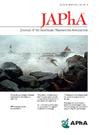Utilizing academic detailing to take a bite out of antibiotic prophylaxis prior to dental procedures
IF 2.5
4区 医学
Q3 PHARMACOLOGY & PHARMACY
Journal of the American Pharmacists Association
Pub Date : 2025-05-01
DOI:10.1016/j.japh.2025.102351
引用次数: 0
Abstract
Background
Within the United States, dentists represent the top specialty prescriber of antibiotics in the ambulatory care setting. With the growth of antimicrobial stewardship programs an overall decrease in antibiotic prescribing has been observed. However, prescribing within the dental subset has remained steady.
Objective
To describe implementation of an antibiotic stewardship initiative targeting proper utilization of antibiotic prophylaxis by dentists prior to dental procedures.
Practice description
Academic detailing, a form of educational outreach, was utilized to facilitate prescribing behavior change. An academic detailer met with dental staff in a face-to-face one-on-one manner to align prescribing with current evidence-based practice. During the encounter, developed resources were utilized to deliver key messages focusing on specific prescribing improvements, while robust conversation allowed the detailer to identify and address any prescriber motivations and/or perceived barriers.
Practice innovation
An antimicrobial stewardship initiative specific to the dental setting, utilizing academic detailing, has not been previously described in the literature.
Evaluation methods
Comparisons of prescribing appropriateness before and after the intervention was performed using a one-way analysis of variance model. Additionally, a single-group generalized least-squares interrupted time series analysis was performed to estimate the impact of the intervention on the level and slope changes before and after implementation on the number of inappropriate prescriptions.
Results
There were 257 prescriptions for dental prophylaxis included in the preimplementation period and 42 prescriptions for dental prophylaxis included in the postimplementation period. Dental prophylaxis prescribing appropriateness was greater in the postimplementation period (17.6% vs. 89.8%; P < 0.001). The incidence of inappropriate prescriptions decreased by 25.39 per 1000 population (P < 0.001) between the periods.
Conclusion
Academic detailing improved the prescribing appropriateness of antibiotic prophylaxis prior to dental procedures at Veterans Affairs Butler Healthcare System.
在牙科手术之前,利用学术细节来减少抗生素预防。
背景:在美国,牙医代表的顶级专业处方抗生素在门诊护理设置。随着抗菌药物管理计划的增长,抗生素处方的总体减少已被观察到。然而,牙科的处方一直保持稳定。目的:描述实施抗生素管理倡议,目标是牙医在牙科手术前正确使用抗生素预防。实践描述:学术细节,一种教育外展形式,被用来促进处方行为的改变。一个学术细节师会见了牙科工作人员面对面的一对一的方式,以调整处方与当前的循证实践。在会面期间,利用已开发的资源来传递专注于具体处方改进的关键信息,而稳健的对话允许详细人员识别和解决任何处方动机和/或感知到的障碍。实践创新:一项针对牙科环境的抗菌药物管理倡议,利用学术细节,以前没有在文献中描述过。评价方法:采用单因素方差分析模型对干预前后处方适宜性进行比较。此外,进行单组广义最小二乘中断时间序列分析,以估计干预前后水平和斜率变化对不适当处方数量的影响。结果:实施前纳入口腔预防处方257张,实施后纳入口腔预防处方42张。牙科预防处方的适当性在实施后阶段更高(17.6%比89.8%;结论:学术细节改善了VA Butler医疗保健系统牙科手术前抗生素预防处方的适当性。
本文章由计算机程序翻译,如有差异,请以英文原文为准。
求助全文
约1分钟内获得全文
求助全文
来源期刊
CiteScore
3.30
自引率
14.30%
发文量
336
审稿时长
46 days
期刊介绍:
The Journal of the American Pharmacists Association is the official peer-reviewed journal of the American Pharmacists Association (APhA), providing information on pharmaceutical care, drug therapy, diseases and other health issues, trends in pharmacy practice and therapeutics, informed opinion, and original research. JAPhA publishes original research, reviews, experiences, and opinion articles that link science to contemporary pharmacy practice to improve patient care.

 求助内容:
求助内容: 应助结果提醒方式:
应助结果提醒方式:


